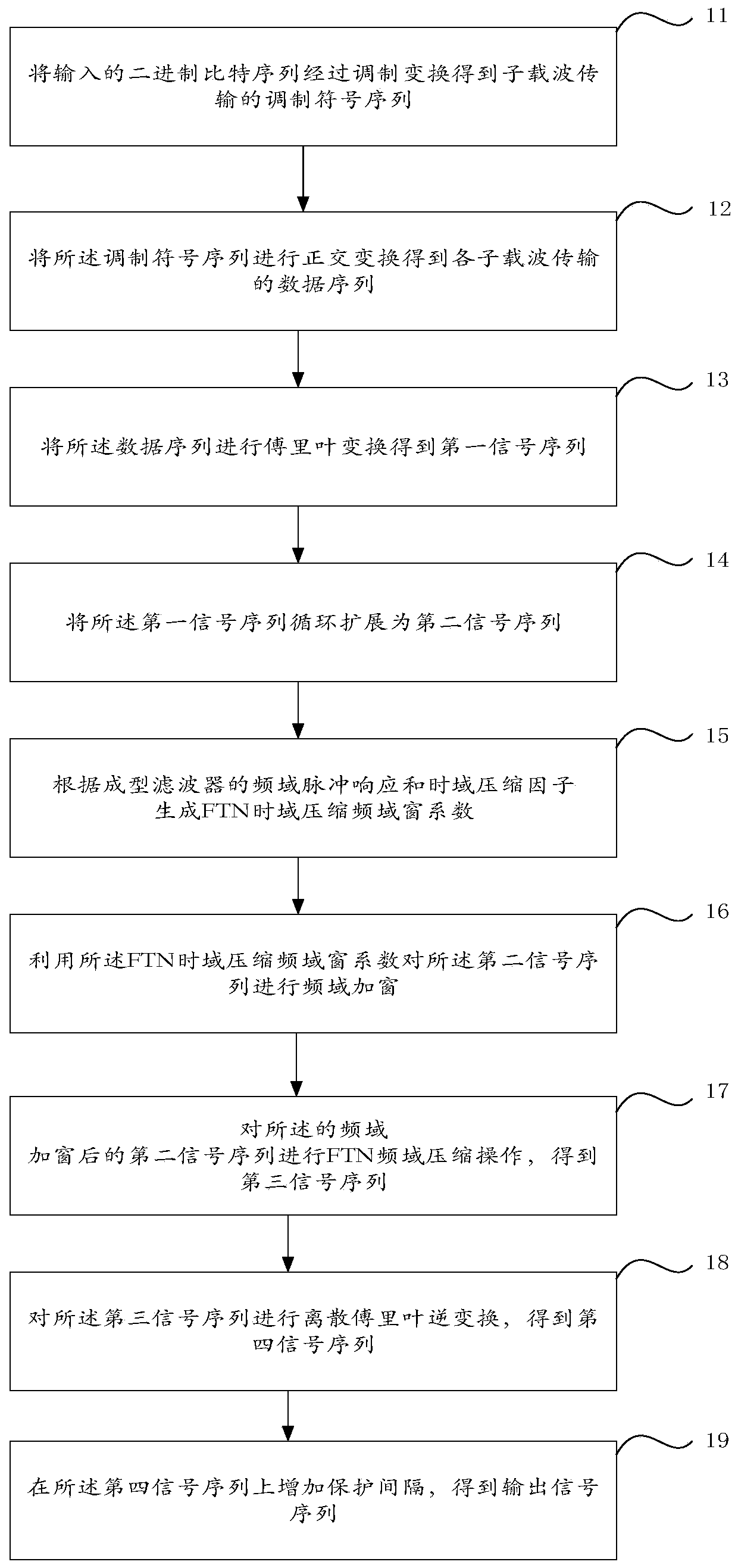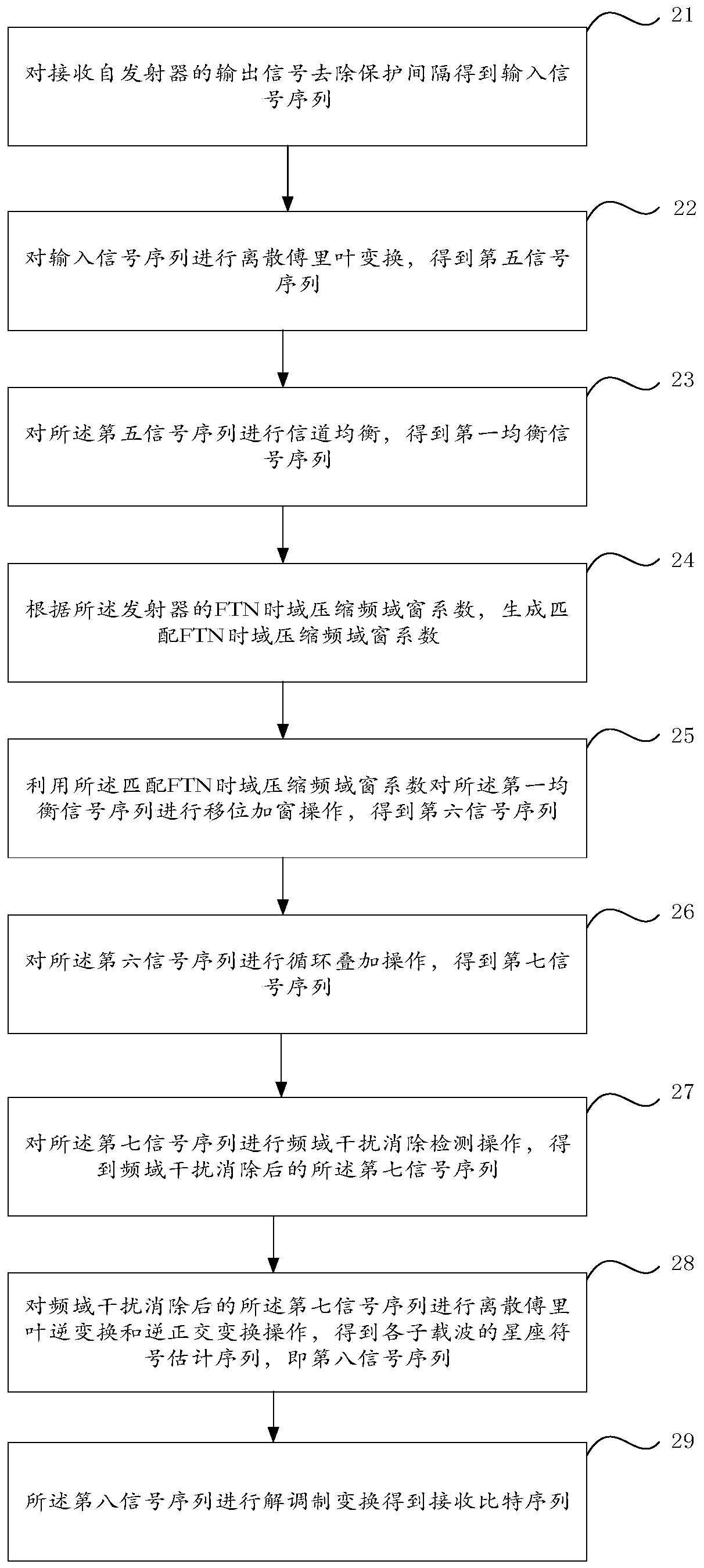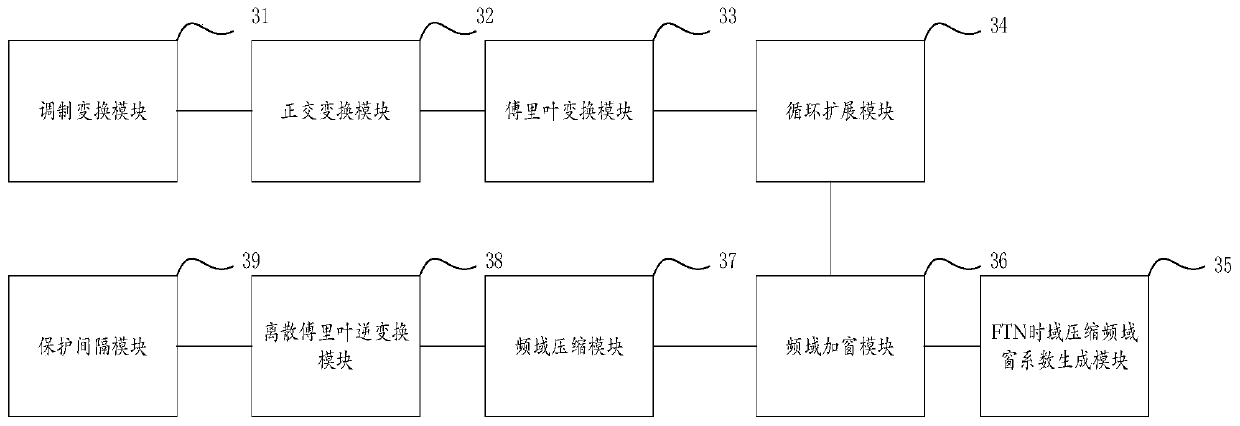Time-frequency compression multi-carrier transmitting method, time-frequency compression multi-carrier receiving method, transmitter and receiver
A multi-carrier reception and multi-carrier technology, which is applied in the shaping network, modulated carrier system, multi-frequency code system, etc. in the transmitter/receiver, can solve the problem of high detection complexity and inflexible and efficient implementation of ISI\ICI elimination and other issues to achieve accurate transmission and reduced detection complexity
- Summary
- Abstract
- Description
- Claims
- Application Information
AI Technical Summary
Problems solved by technology
Method used
Image
Examples
specific Embodiment
[0125] like image 3 As shown, a schematic structural diagram of a transmitter in the embodiment of the present application is shown.
[0126] The transmitters include:
[0127] The modulation transformation module 31 is used to convert the input binary bit sequence through modulation transformation to obtain the modulation symbol sequence transmitted by the subcarrier; specifically, the binary bit sequence in the input data block is respectively subjected to encoding transformation, interleaving transformation, and constellation mapping transformation to obtain each Modulation symbol sequence for subcarrier transmission.
[0128] Orthogonal transformation module 32, coupled to the modulation transformation module 31, for performing orthogonal transformation on the modulation symbol sequence to obtain the data sequence transmitted by each subcarrier; specifically, performing orthogonal transformation on the modulation symbol sequence to obtain Data sequence transmitted by mu...
Embodiment 1
[0151] like Figure 5 As shown in FIG. 1 , it shows a BER performance comparison diagram of a multi-carrier FTN system under different frequency domain compression factors in an embodiment of the present application. Among them, free ICI / ISI is the performance boundary of the Nyquist transmission system, and the compression coefficients of the time domain and the frequency domain are respectively {k=1; α=1}. For FTN transmission, the time-domain compression factor k={0.9, 0.8, 0.6} and the frequency-domain compression factor α={0.9, 0.8, 0.67, 0.6} are respectively set. When the overall compression rate is about 0.8, one-dimensional compression in time domain {k=0.8; α=1}, one-dimensional compression in frequency domain {k=1; α=0.8} and two-dimensional compression in time-frequency {k=0.9 ; BER performance of the three FTN transmission systems with α=0.9} is similar and close to the Nyquist performance boundary; when the overall compression ratio is reduced to about 0.6, the ...
PUM
 Login to View More
Login to View More Abstract
Description
Claims
Application Information
 Login to View More
Login to View More - R&D
- Intellectual Property
- Life Sciences
- Materials
- Tech Scout
- Unparalleled Data Quality
- Higher Quality Content
- 60% Fewer Hallucinations
Browse by: Latest US Patents, China's latest patents, Technical Efficacy Thesaurus, Application Domain, Technology Topic, Popular Technical Reports.
© 2025 PatSnap. All rights reserved.Legal|Privacy policy|Modern Slavery Act Transparency Statement|Sitemap|About US| Contact US: help@patsnap.com



